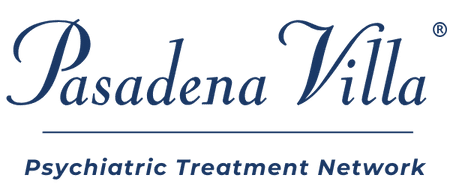Home | Treatment | What We Treat | Obsessive-Compulsive Disorder (OCD)
What We Treat
Obsessive-Compulsive Disorder

A disorder marked by uncontrollable recurring thoughts or repetitive behaviors, obsessive-compulsive disorder (OCD) can significantly interfere with daily life when left untreated.
Treatment for OCD
Although OCD is a chronic condition, treatment can help even those with the most severe forms of the disorder learn to manage their symptoms, engage in day-to-day activities, and go on to lead full lives. At Pasadena Villa, treatment typically involves a comprehensive plan that combines medications, psychotherapy, and other evidence-based methodologies to help clients achieve the highest levels of functioning and independent living.
Substance abuse may also be present in those with obsessive-compulsive disorder as a result of attempting to self-medicate or manage unwanted symptoms. Substance misuse can also worsen the symptoms of OCD, so it’s important to treat both co-occurring disordrs concurrently in an integrated setting.
Defining obsessive-compulsive disorder
OCD symptoms usually emerge between late childhood and early adulthood in the form of uncontrollable obsessive thoughts, compulsive repetitive behaviors, or both. An individual’s obsessions and compulsions may start slowly, change over time, worsen due to stress, and go away for periods of time.
Some people with OCD also have a tic disorder involving repetitive movements or sounds. These time-consuming, unwanted thoughts and actions can cause significant distress, and those with OCD might avoid situations that trigger their symptoms or use drugs or alcohol to cope. However, treatment is available to manage symptoms and improve quality of life.
Approximately 2.3% of US adults (or 1 in 40 people) will experience OCD at some point in their lives.
FAQs
Questions about PTSD & trauma
What is obsessive-compulsive disorder?
The National Institute of Mental Health defines obsessive-compulsive disorder (OCD) as a long-lasting disorder in which an individual experiences uncontrollable and recurring thoughts (obsessions), engages in repetitive behaviors (compulsions), or both. People with OCD have time-consuming symptoms that can cause significant distress or interfere with daily life. However, treatment is available to help individuals manage their symptoms and improve their quality of life, usually in the form of a combination of psychotherapy and prescription medications.
What are the signs and symptoms of obsessive-compulsive disorder?
Individuals with OCD may experience obsessions (repeated thoughts, urges, or mental images that are intrusive, unwanted, and make most people anxious), compulsions (repetitive behaviors a person feels the urge to do, often in response to an obsession), or both.
- Common obsessions include:
- Fear of germs or contamination
- Fear of forgetting, losing, or misplacing something
- Fear of losing control over their behavior
- Aggressive thoughts toward others or oneself
- Unwanted, forbidden, or taboo thoughts involving sex, religion, or harm
- Desire to have things symmetrical or in perfect order
Common compulsions include:
- Excessive cleaning or handwashing
- Ordering or arranging items in a particular, precise way
- Repeatedly checking things, such as the door lock or stove burners
- Compulsive countin
- Praying or repeating words silently
When to seek help for obsessive-compulsive disorder?
Not all repeated thoughts are obsessions, and not all rituals or habits are compulsions. However, individuals with OCD generally:
- Can’t control their obsessions or compulsions, even when they know they’re excessive.
- Spend more than one hour a day on their obsessions or compulsions.
- Don’t get pleasure from their compulsions, but may feel temporary relief from their anxiety.
- Experience significant problems in daily life due to these thoughts or behaviors.
What are the risk factors for OCD?
While the exact causes of OCD are unknown, risk factors including genetics, biology, temperament, and childhood trauma can increase the chances of developing the disorder.
- Genetics – Having a first-degree relative (parent or sibling) with OCD is associated with an increased chance of developing the disorder.
- Biology – Brain imaging studies have shown that individuals with OCD often have differences in the frontal cortex and subcortical structures of the brain, areas of the brain that impact the ability to control behavior and emotional responses.
- Temperament – Those who exhibit more reserved behaviors, experience negative emotions, and show symptoms of anxiety and depression as children are more likely to develop OCD.
- Childhood trauma – Some studies have reported an association between childhood trauma and obsessive-compulsive symptoms.
How is OCD diagnosed?
Diagnosing OCD can be difficult because some of the disorder’s symptoms — such as worry, anxiety, and low mood — are fairly generic and similar to those of other mental health conditions. Also, those with OCD may be hesitant to tell their health care provider about their obsessions and compulsions out of fear of judgment.
If you’re experiencing symptoms, the first thing you should do is consult with a healthcare provider. They can then refer you to a mental health professional for further evaluation or treatment, if necessary.
Pasadena Villa
Our Levels of Care
From residential treatment to partial hospitalization and intensive outpatient programs, our comprehensive continuum of care meets individuals at every stage of their recovery journey.
Take the first step toward recovery.
Our admissions experts are here to answer your questions and help you begin the process.
Explore our locations or fill out our contact form today.
Your privacy is our priority. All communication is completely confidential.

